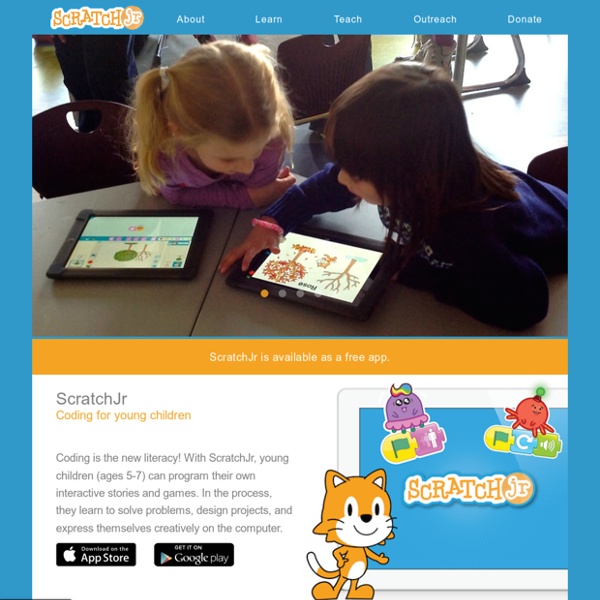



KIWI - A robotics construction set for young children Since 2007, through generous funding by the National Science Foundation (NSF Grant No. DRL-1118897, DRL-0735657), the DevTech Research Group has been researching how to create a developmentally appropriate robotics construction set for young children in Pre-K through 2nd grade. The first prototype was called KIWI and consisted of intuitive, easy to connect construction materials including: wheels, motors, light output, and a variety of sensors (Sound, Light, and Distance sensors). KIWI is designed to work without any screentime using wooden programming blocks. The KIWI prototype paved the way to developing KIBO which is now commercially available through Kinderlab Robotics.
The 10 Best Programming Games to Test and Build Your Coding Skills Advertisement Programming is fun once you’re confident and know what you’re doing, but getting to that point can be a grueling experience. Which is why, in between classes and lectures and tutorials, you should set aside time to play these programming games and challenges. The 14 Best Data Visualization Tools Nishith Sharma is the co-founder of frrole, a social intelligence startup. Raw data is boring and it’s difficult to make sense of it in its natural form. Add visualization to it and you get something that everybody can easily digest. Not only you can make sense of it faster, but you can also observe interesting patterns that wouldn’t be apparent from looking only at stats. All Killer, No Filler This one’s different, trust us.
Cryptocat - Create Encrypted Backchannels Cryptocat is an open source project that allows users to create private encrypted chat rooms. Cryptocat can be installed in Firefox, Chrome, Safari, or as Mac desktop application. After installing Cryptocat open the application, enter a room name and username, then click connect. To have others join you in your chat room they have to know and enter the encryption key provided by Cryptocat. For those of you who get that nostalgic feeling when you see old 8 bit graphics, Cryptocat will make you feel like a kid again.
The effects of computer use on creative thinking among kindergarten children in Jordan. The objective of the current study was to examine the effect of early computer experience, using quasi-experimental design, on creative thinking among Jordanian kindergarten children. It intended to answer two main research questions. First, does adding a computer to a kindergarten environment enhance children's creative thinking? Second, does children's creative thinking differ due to gender? Experimental group consists of (37) and the control groups consist Of (39) child. Helpful Resources to Teach Students Coding Skills Coding is an essential skill for 21st century students. 'When kids learn to code' , Mitch Resnick states, ' it enables them to learn many other things, opens up many new opportunities for learning. It's useful to make an analogy to reading and writing, when you learn to read and write it opens up opportunities for you to learn so many other things, when you learn to read you can then read to learn, which is the same thing with coding, if you learn to code you can code to learn.'
Interactive angles teaching tool acute,obtuse,measure with protractor This activity allows manipulation and investigation of various types of angles. It can be used at a variety of different grade levels. At its most basic for teaching about types of angles, acute, obtuse or reflex. For more advanced use to create angle problems in which the missing letter angle values have to be found. You can click and drag the handles to change the angles and the values will updated. Digitally Interfaced Book: Paper, Graphite, Makey Makey, Scratch, and Imagination As a professional artist, deepening the ways in which seemingly disparate objects and processes are interconnected through locating, and mapping their intersections has been one of the main elements of my studio practice. The Fab Lab tools and working processes create an environment that is well suited to investigating those types of intersections. In an effort to integrate Fab Lab tools centered on craft, and studio-based processes into the classroom, I have been working to implement a Mobile MakerCart at a project-based K-8 charter school. In addition to introducing craft-based physical computing projects to the children, a guiding principle behind the MakerCart is to give teachers the opportunity to develop familiarity with the MakerCart’s tools and processes in order to be able to envision the ways in which they might be able to develop their own curriculum for use in the classroom. Fig. 1 Fig. 2